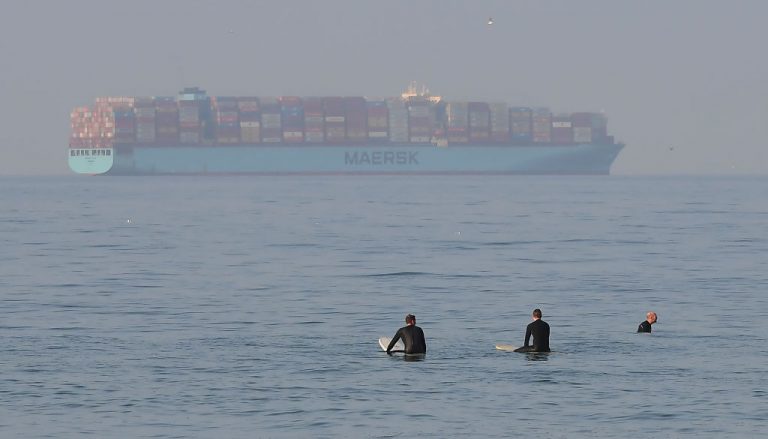As Christmas rush approaches, the North American supply chain is under pressure with ports in California and New York have ships waiting as long as four weeks to unload their cargo.
An Oct. 1 article in the UK-based Daily Mail showed footage of “more than a dozen cargo ships and oil tankers anchored outside New York’s harbor, waiting to unload their goods.”
The piece also noted two of the United States’ largest ports in Los Angeles and Long Beach are “currently housing vessels that have been left anchored for four weeks.”
Photos in the article taken by a photographer for the paper at a New York port showed the extensive backlog of ships carrying goods from China and other places in Asia, as well as long lines of semi trucks waiting to load.
A Sept. 30 article by the Wall Street Journal counted a backlog of 73 ships on Sept. 19, which had fallen somewhat to 64 by the end of the month based on data from the Marine Exchange of Southern California.
Success
You are now signed up for our newsletter
Success
Check your email to complete sign up
“Containers at the ports waited, on average, 5.4 days to be picked up from the docks by truck in August, according to the Pacific Merchant Shipping Association, a trade group, up from an average 2.5 days before the pandemic,” added the article.
A second Sept. 21 piece by WSJ said, “Before the pandemic, it was unusual for more than one ship to wait for a berth.”
WSJ went on to attribute the issue to California’s proximity to mainland China, “Last year, the two ports handled the equivalent of 8.8 million loaded import containers, more than double the 3.9 million loaded boxes that arrived at the nation’s next busiest port at New York and New Jersey.”
“The California ports are in easy range of China and the factories that churn out big volumes of electronics, apparel and an array of other consumer goods.”
A Sept. 28 article by CBS Los Angeles estimated the ships comprised as many as 500,000 shipping containers. Semi drivers interviewed by the outlet were paraphrased as saying “that a trucker shortage is not the problem, instead, the port needs to speed up wait times and have more dock help ready to offload.”
One driver told CBSLA that the dock was only operating one of its three cranes while a line of 60 truckers, who are paid per delivery and not hourly, waited for hours in line to load.
Daily Mail noted the issue wasn’t only affecting ships, but also Chicago’s rail system, which it described as the size of 500 football fields, being backed up as far as 25 miles.
An executive for TRAC Intermodal, a marine chassis company, told the outlet, “Instead of getting 30 or 40 boxes off a block of cars every day, you’re getting full trains coming in with 250 to 275 containers…Recently, we had a train arrive in Cleveland from a western railroad interchanged with the CSX with around 272 boxes on it.”
“That’s very unusual and we’re just not fleeted for that.”
An Oct. 2 article by The Washington Post illustrated the massive increase in cost of importing from China the problem has produced, “This month, the median cost of shipping a standard rectangular metal container from China to the West Coast of the United States hit a record $20,586, almost twice what it cost in July, which was twice what it cost in January.”
“The seven largest publicly traded ocean carriers — including companies such as Maersk, COSCO and Hapag-Lloyd — reported more than $23 billion in profits in the first half of this year, compared with just $1 billion in the same period last year,” added the author.
The Post continued, revealing the situation helps the industry’s biggest players, but hurts small businesses, “The soaring freight bills that fueled those profits, however, have put smaller shippers at a disadvantage to giants like Walmart or Amazon. The biggest companies not only can more easily absorb higher costs. They also negotiate more attractive contracts in the first place, which means they can reliably get their goods across the ocean while smaller companies struggle.”
A Los Angeles port workers union representative was also paraphrased as telling The Post, “Twenty union members have died of covid-19 while working through the pandemic.”
















